Table of Contents
Are you struggling to make your mark in the digital world? Wondering how to elevate your website’s visibility and drive more organic traffic? Enter the SEO editor: a groundbreaking tool designed to revolutionize your online presence.
The SEO editor is not just another tool; it’s your digital ally. It helps you seamlessly integrate keywords, optimize content, and enhance your website’s structure, making it more appealing to search engines like Google.
But why is an SEO editor so crucial? Simply put, it empowers you to create content that stands out. It guides you through the complex world of SEO, ensuring your website not only ranks higher but also attracts and retains the right audience. An effective SEO editor combines the art of writing with the science of search engine algorithms, offering a balanced approach to digital content creation.
What Makes an SEO Editor Vital in 2024?
As we venture deeper into the digital era, the significance of an SEO editor cannot be overstated. But what exactly makes it so indispensable in 2024? The answer lies in the continuous evolution of search engine algorithms and the increasing sophistication of online audiences. An SEO editor is your beacon in this ever-changing landscape, ensuring your content remains relevant and impactful.
Firstly, an SEO editor helps navigate the complexities of keyword optimization. It’s not just about stuffing your content with keywords; it’s about strategic placement, relevance, and the integration of long-tail phrases. This precision ensures your content is discovered by the right audience at the right time. Moreover, with voice search on the rise, adapting your SEO strategy to include conversational keywords is more crucial than ever.
Secondly, the importance of user experience (UX) in SEO rankings has soared. An SEO editor aids in structuring your content to enhance readability, improve page load times, and ensure mobile responsiveness. These factors are instrumental in retaining visitors and reducing bounce rates, directly influencing your SEO performance.
Additionally, content quality has become a cornerstone of SEO success. An SEO editor encourages the creation of value-driven content that not only ranks well but also establishes your brand as an authority in your niche. It’s about crafting articles, blogs, and web pages that answer questions, solve problems, and engage readers, thereby fostering trust and loyalty.
5 Essential Features Every SEO Editor Must Have
In the quest for online dominance, not all SEO editors are created equal. To truly harness the power of SEO, your editor must be equipped with certain indispensable features. Understanding these features can help you choose an SEO editor that transforms your content strategy and propels your website to new heights.
First and foremost, an advanced keyword analysis tool is non-negotiable. This feature allows for the identification of high-value keywords, including long-tail phrases and questions related to your niche. It’s about going beyond basic search terms to uncover opportunities that drive targeted traffic and enhance your content’s relevance.
Another critical feature is real-time SEO scoring. As you craft your content, an effective SEO editor provides instant feedback on your SEO practices. This includes suggestions for improving keyword distribution, enhancing meta descriptions, and optimizing headings. It’s like having an SEO consultant guiding your every move, ensuring your content is primed for success before it even goes live.
Content optimization suggestions are also vital. Beyond keywords, your SEO editor should offer advice on structuring your content for better engagement and readability. This might include tips on paragraph length, the use of bullet points, and the incorporation of multimedia elements. Such features ensure your content is not just optimized for search engines but is also compelling and valuable to your readers.
Lastly, an SEO editor must feature comprehensive analytics and tracking. Understanding how your content performs in real-time allows for agile adjustments to your strategy. This includes monitoring keyword rankings, assessing page views, and analyzing user engagement metrics. Armed with this data, you can refine your content to better meet the needs of your audience and the demands of search engines.
Key 1: Enhanced Keyword Integration Techniques
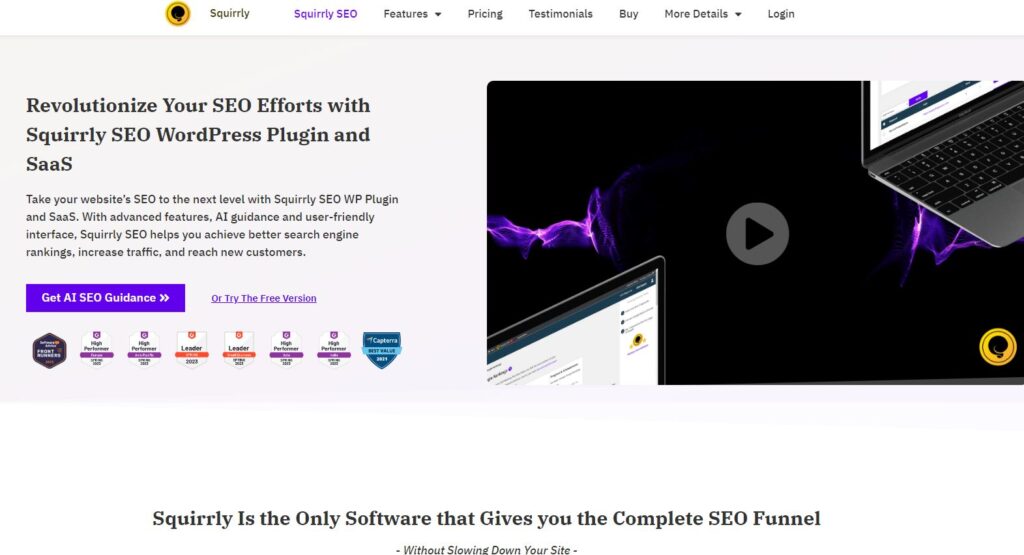
“Content is king, but marketing is queen, and runs the household.” – Gary Vaynerchuk. This quote perfectly encapsulates the essence of effective SEO strategies, where enhanced keyword integration techniques play a pivotal role. Incorporating the right keywords into your content is not just about SEO; it’s about connecting with your audience on a deeper level.
The art of keyword integration goes beyond mere insertion into text. It’s about weaving your primary keyword, along with its variations and related terms, naturally throughout your content. This strategy not only satisfies search engines but also ensures your writing resonates with your audience. By aligning your content with the search intent of your target audience, you increase the chances of your message being heard amidst the digital noise.
Moreover, the evolution of search algorithms has made them more sophisticated than ever. They can now understand the context of your content, making it crucial to use keywords in a way that adds value to your readers. It’s no longer about keyword stuffing but about creating a seamless narrative that guides your audience through your content, making them stay longer and engage more deeply.
To truly master enhanced keyword integration techniques, it’s essential to keep the user experience at the forefront of your strategy. Each keyword should serve a purpose, enhancing the reader’s understanding or providing them with the solutions they seek. By doing so, you not only improve your SEO rankings but also build credibility and authority in your niche.
Mastering Keyword Density: Beyond the Basics
“Finding the right balance in keyword density is like finding the sweet spot in a delicious recipe.” Just as too much or too little of an ingredient can alter the taste of a dish, the same principle applies to keyword density in your content. Striking the perfect balance is key to ensuring your content is both SEO-friendly and enjoyable for your readers.
Understanding that keyword density is not a one-size-fits-all metric is crucial. The ideal density depends on the nature of your content, the competition in your niche, and the preferences of your target audience. A higher density might work for some topics, while others require a more subtle approach. The goal is to integrate keywords naturally, without disrupting the flow or readability of your content.
Moreover, the concept of keyword density extends beyond the primary keyword to include secondary keywords and semantic variations. This approach helps create a rich, contextually relevant piece that search engines can easily understand and rank for a broader range of queries. It’s about painting a complete picture with your words, where each keyword acts as a brushstroke contributing to the overall masterpiece.
In practice, mastering keyword density involves constant experimentation and analysis. It requires you to monitor the performance of your content, gather insights from analytics, and adjust your strategy accordingly. By refining your approach over time, you can discover the keyword density that works best for your content, driving more traffic and engagement.
Advanced Tools for Keyword Research: Unlocking Potential
“In the world of SEO, the best tools can be your greatest allies.” – Unknown. To truly excel in enhanced keyword integration techniques, harnessing the power of advanced tools for keyword research is indispensable. These tools offer insights that go beyond the surface, revealing the keywords and phrases that can unlock the full potential of your content strategy.
Advanced keyword research tools provide a wealth of data, including search volume, competition level, and keyword difficulty, which can guide your content creation process. They can also uncover long-tail keywords and question-based queries that represent specific interests and pain points of your audience. By targeting these, you can create content that directly addresses the needs of your readers, increasing relevance and engagement.
Moreover, these tools often offer features that allow you to analyze your competitors’ keyword strategies. This insight can be invaluable, enabling you to identify gaps in your own strategy and discover new opportunities for differentiation. By understanding the keywords that drive traffic to your competitors’ sites, you can tailor your approach to compete more effectively.
Ultimately, the use of advanced tools for keyword research is about making informed decisions. It’s about leveraging data to refine your keyword strategy continuously, ensuring your content remains relevant and visible in the ever-changing landscape of search engine algorithms. With the right tools at your disposal, you can elevate your SEO game, driving more traffic and achieving greater success online.
Case Studies: A 300% Traffic Boost with Smart Keywords
“Success in SEO is the result of good planning, innovative thinking, and strategic execution.” – A case study of a company that achieved a 300% boost in traffic through smart keyword integration exemplifies this statement. By carefully selecting and integrating keywords into their content, the company managed to significantly increase their online visibility and attract a larger audience.
This success story begins with a comprehensive keyword research phase, utilizing advanced tools to identify high-value keywords that were both relevant to their audience and had a high potential for traffic growth. The company focused on a mix of short-tail and long-tail keywords, ensuring a balanced approach that targeted various stages of the buyer’s journey.
Following the research phase, the company implemented a meticulous content strategy that prioritized the natural integration of selected keywords. They updated existing content and created new articles, guides, and blog posts that not only incorporated the keywords but also provided genuine value to their readers. This approach helped improve their search engine rankings while also enhancing user engagement.
The results were remarkable. Not only did the company see a 300% increase in traffic, but they also experienced improvements in other key metrics, such as time on site and conversion rates. This case study demonstrates the power of smart keyword integration when combined with high-quality content and a user-focused approach. It serves as a compelling example for businesses looking to enhance their online presence through effective SEO strategies.
Key 2: Boosting Your Site’s Speed for SEO Success
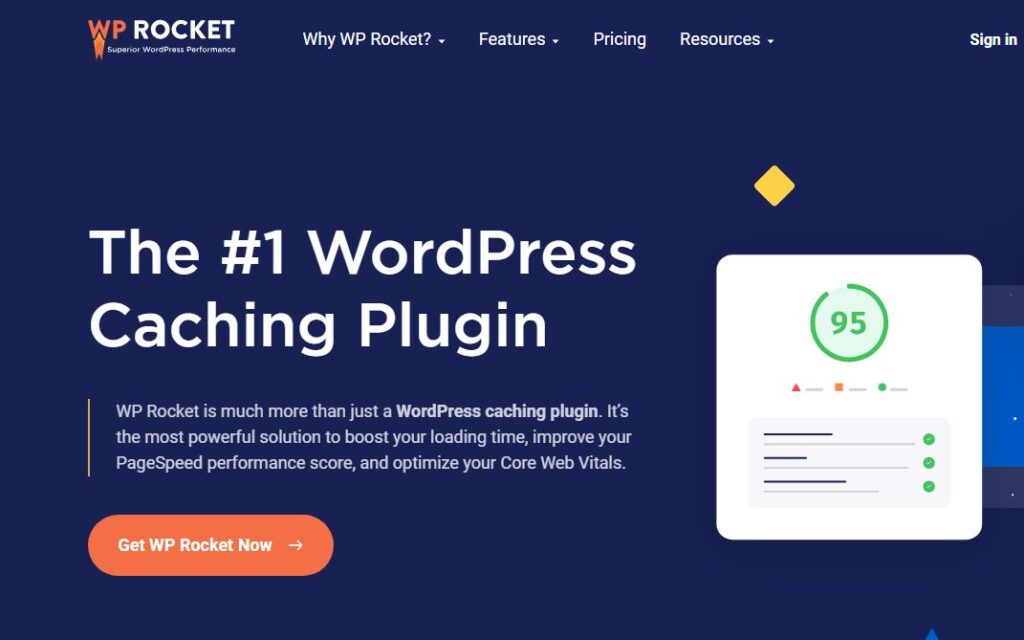
Did you know that 53% of mobile site visitors will leave a page that takes longer than three seconds to load? In the fast-paced digital world, site speed is not just a luxury; it’s a necessity for SEO success. Boosting your site’s speed can significantly improve your search engine rankings and enhance user experience, leading to higher engagement and conversion rates.
Site speed is a critical factor in search engine algorithms. It affects not only your SEO rankings but also user satisfaction. A fast-loading website keeps users engaged, reduces bounce rates, and increases the likelihood of visitors staying longer and exploring more of your content. This positive user behavior signals search engines that your site is valuable, which in turn boosts your rankings.
Improving your site’s speed requires a multifaceted approach. From optimizing images and leveraging browser caching to minimizing code and utilizing content delivery networks (CDNs), each step contributes to shaving precious milliseconds off your load time. These technical adjustments may seem daunting, but they are essential for creating a smooth, fast, and enjoyable experience for your visitors.
Addressing site speed is not a one-time task but an ongoing process. As you add new content, integrate new tools, or update your site’s design, continuously monitoring and optimizing for speed is crucial. Remember, in the quest for SEO success, a swift site is not just about pleasing search engines but about providing your audience with the fast, accessible, and reliable online experience they expect.
The Impact of Page Load Time on SEO Rankings
A one-second delay in page response can result in a 7% reduction in conversions. This startling statistic highlights the critical impact of page load time on SEO rankings and overall website performance. In an era where instant gratification is the norm, even a slight delay can deter potential customers, affecting your site’s ability to attract and retain visitors.
Search engines, particularly Google, prioritize user experience in their ranking algorithms. A slow-loading site is perceived as less user-friendly, directly impacting its SEO rankings. Faster sites not only rank higher but also receive more organic traffic. This is because search engines aim to provide users with the best possible results, and speed is a significant factor in that equation.
Furthermore, page load time also influences your site’s bounce rate. Users are less likely to wait for a slow-loading page, often opting to leave in favor of a quicker alternative. A high bounce rate signals to search engines that your site may not be providing value, further affecting your rankings and visibility.
To stay competitive and ensure your site ranks well, focusing on reducing page load times is essential. By enhancing your site’s speed, you not only improve your SEO rankings but also provide a better user experience, encouraging visitors to stay longer and engage more deeply with your content.
Practical Steps to Accelerate Your Website
Accelerating your website is not just about improving its SEO rankings; it’s about enhancing the overall user experience. The journey to a faster site begins with simple, actionable steps that can lead to significant improvements in page load time. By focusing on these practical measures, you can ensure your site is optimized for both search engines and your audience.
Firstly, optimizing images is a crucial step. High-quality images can enhance your content, but they also contribute to longer load times. By compressing images and using the appropriate file formats, you can reduce their size without sacrificing quality, speeding up your site significantly.
Next, reducing the number of plugins and third-party scripts can also have a noticeable impact on your site’s speed. Each plugin or script adds to the complexity of your site, potentially increasing load times. Evaluate your site’s plugins and scripts critically, removing or replacing those that are not essential or that negatively affect performance.
Implementing browser caching is another effective strategy. By enabling caching, you allow returning visitors’ browsers to store parts of your site, reducing load times for subsequent visits. This not only speeds up your site for individual users but also decreases the overall load on your servers.
Lastly, consider using a Content Delivery Network (CDN). CDNs distribute your content across multiple servers around the world, ensuring that it’s delivered from the location closest to each visitor. This reduces latency, improves load times, and can significantly enhance the user experience for a global audience.
Leveraging Compression and Caching for Immediate Wins
Compression and caching are two powerful techniques that can lead to immediate improvements in your website’s speed. By implementing these strategies, you can significantly reduce load times, improving both SEO rankings and user experience with relatively minimal effort.
Compression works by minimizing the size of your website’s files, including HTML, CSS, and JavaScript. Tools like Gzip can reduce the size of these files by up to 70%, making them faster to download and reducing the overall time it takes for your pages to load. This not only makes your site more efficient but also more appealing to both users and search engines.
Caching, on the other hand, allows browsers to store copies of your site’s resources on a user’s device after the first visit. When they return, the browser can load the stored resources without having to download them again, significantly reducing load times. Implementing effective caching policies can transform the user experience for repeat visitors, encouraging them to spend more time on your site.
Both compression and caching require technical know-how to implement, but the payoff can be substantial. These optimizations work behind the scenes, silently enhancing the speed and performance of your site. For website owners looking for quick, impactful ways to improve their site’s speed, leveraging compression and caching can provide immediate wins.
By focusing on these key areas—enhanced keyword integration techniques and boosting your site’s speed—you can create a strong foundation for SEO success. Each step you take not only improves your site’s visibility in search engine rankings but also enhances the overall experience for your visitors, setting the stage for increased engagement, conversions, and loyalty.
Key 3: Mobile Optimization: A Necessity, Not an Option
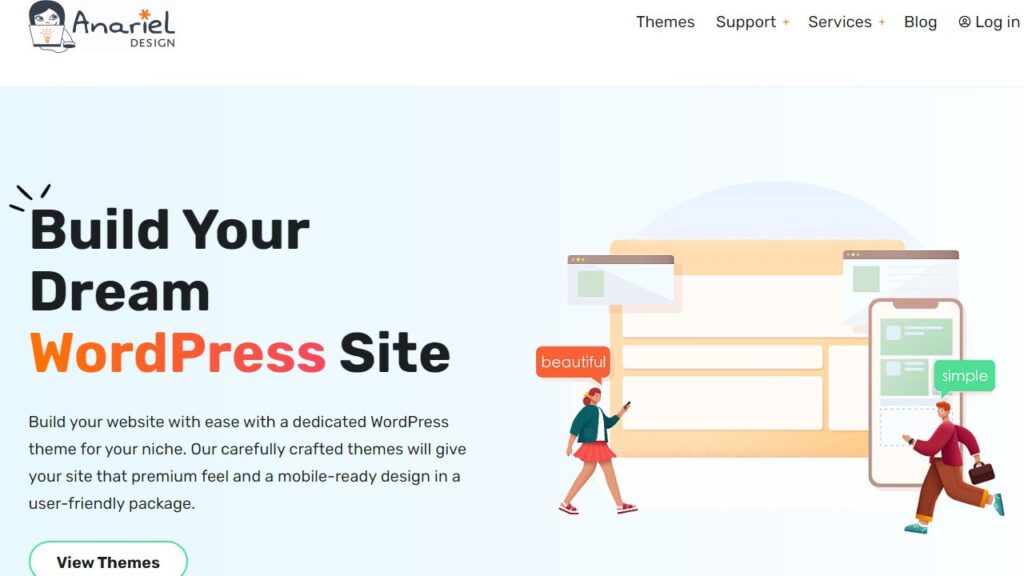
Just as a car needs both fuel and a well-tuned engine to run efficiently, a website needs both desktop and mobile optimization to succeed in today’s digital landscape. Mobile optimization has transitioned from a nice-to-have to an absolute necessity. With over half of global web traffic now coming from mobile devices, ensuring your website is mobile-friendly is not just about providing convenience to your users—it’s about securing your site’s visibility and relevance in search engine rankings.
Mobile optimization involves designing and structuring your website in a way that it not only looks good on a desktop but also provides an excellent user experience on mobile devices. This means fast loading times, responsive design, and content that is easily consumable on a smaller screen. The goal is to create a seamless experience for users, no matter the device they use to access your site.
Search engines, particularly Google, have shifted towards mobile-first indexing, which means they predominantly use the mobile version of the content for indexing and ranking. This shift underscores the importance of mobile optimization in your SEO strategy. Websites that are not optimized for mobile are likely to suffer in search engine rankings, making it harder for them to be discovered by potential customers.
Addressing mobile optimization is not just about appeasing search engines; it’s about connecting with your audience where they are most active. By prioritizing mobile optimization, you’re not only enhancing your SEO but also building a stronger, more engaging online presence. This approach ensures that your site is accessible, enjoyable, and valuable to your users, paving the way for increased traffic, engagement, and conversions.
Understanding Mobile-First Indexing for SEO
Mobile-first indexing is like the shift from traditional film to digital photography; it’s a fundamental change in how content is captured, processed, and displayed. With mobile-first indexing, Google now primarily uses the mobile version of a website’s content to index its pages and understand its structured data. This significant shift reflects the growing dominance of mobile browsing and the need for websites to be optimized for mobile users to maintain and improve their SEO rankings.
Understanding mobile-first indexing is crucial for SEO because it emphasizes the importance of ensuring your mobile site is as comprehensive and content-rich as your desktop site. This means that if your mobile site is a stripped-down version of your desktop site, you could be missing out on crucial SEO opportunities. Search engines expect parity between your mobile and desktop content, and discrepancies can lead to decreased visibility in search results.
To adapt to mobile-first indexing, webmasters must ensure that their mobile sites are fully optimized, not only in terms of content but also in navigation, speed, and user experience. This includes using responsive design, which automatically adjusts the layout of your website to fit the screen it’s being viewed on, ensuring that your site is accessible and easy to use on any device.
Moreover, embracing mobile-first indexing in your SEO strategy means prioritizing mobile performance and user experience in all aspects of your website development and content creation. By doing so, you not only align with search engines’ criteria but also cater to the preferences and behaviors of the modern user, ensuring your site remains competitive and relevant in the ever-evolving digital landscape.
Tips for Creating a Mobile-Friendly Website
Creating a mobile-friendly website is akin to designing a versatile outfit that looks good in any setting; it’s about ensuring your site’s appearance, functionality, and performance adapt seamlessly across devices. To achieve this, there are several practical steps you can take to enhance your website’s mobile-friendliness and, by extension, its SEO performance.
Firstly, focus on responsive design. This approach allows your website to automatically adjust its layout, images, and content to fit the screen size of any device, providing an optimal viewing experience for all users. Responsive design eliminates the need for a separate mobile site, simplifying content management and ensuring consistency in your user experience.
Secondly, pay close attention to your site’s loading speed on mobile devices. Mobile users often rely on cellular data, which can be slower than wired connections, making speed optimization critical. Compressing images, leveraging browser caching, and minimizing code are effective ways to improve loading times and keep your audience engaged.
Another key aspect is simplifying your site’s navigation on mobile devices. Mobile screens offer limited space, and complex menus can be challenging to navigate. Opt for a streamlined, user-friendly menu that makes it easy for users to find what they’re looking for with minimal clicks.
Lastly, ensure your content is easily readable on small screens. Avoid small font sizes and dense blocks of text, and consider the spacing and placement of links to make interaction easy for users with touch screens. By prioritizing readability and ease of use, you can significantly enhance the mobile user experience and boost your SEO efforts.
Common Pitfalls in Mobile SEO and How to Avoid Them
Navigating the realm of mobile SEO is like embarking on a voyage through uncharted waters; there are pitfalls to avoid and best practices to follow to ensure a successful journey. Being aware of common mobile SEO pitfalls can help you steer clear of them and optimize your website effectively for mobile users.
One of the most frequent mistakes is neglecting to test your site on actual mobile devices. While simulators and responsive design checkers offer a preliminary overview, they cannot fully replicate the user experience of real devices. Regular testing on various smartphones and tablets ensures your site is truly optimized for mobile.
Another pitfall is overlooking the importance of touch-friendly design. Mobile users interact with websites through touch, not a mouse and keyboard. This means buttons, links, and navigation elements must be appropriately sized and spaced to prevent accidental clicks and ensure a smooth browsing experience.
Ignoring the impact of pop-ups and interstitials on mobile devices is also a common oversight. While they may serve a purpose on desktop sites, on mobile, they can significantly hinder the user experience, leading to frustration and increased bounce rates. It’s crucial to use these elements sparingly and ensure they are easy to dismiss on mobile devices.
Lastly, failing to consider local SEO can be detrimental to mobile optimization. Mobile searches often have local intent, so incorporating local SEO strategies, such as optimizing for “near me” searches and including local business information, can greatly enhance your visibility and relevance to mobile users.
Key 4: Enhancing User Experience (UX) with SEO Editor
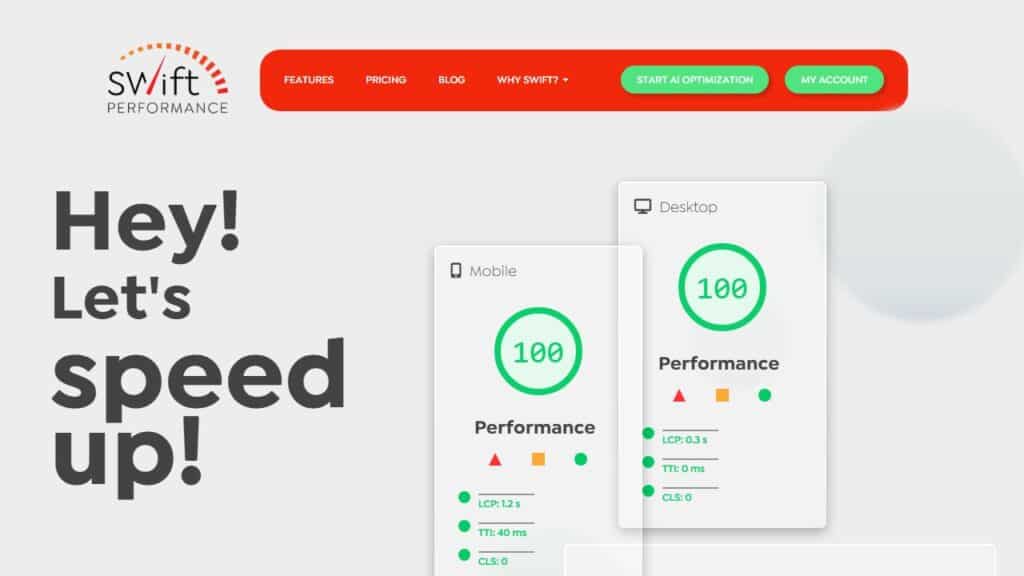
Believe it or not, the key to skyrocketing your site’s SEO rankings could lie in something as foundational yet often overlooked as user experience (UX). With the help of an SEO editor, integrating UX enhancements into your website is not just a possibility but a strategic necessity. In an era where user satisfaction dictates search engine rankings more than ever, focusing on UX is a game-changer.
An SEO editor does more than optimize keyword placement; it plays a crucial role in structuring content that’s not only search engine friendly but also user-centric. This means creating a website that’s not just easy to find but also easy to navigate, read, and interact with. A great UX leads to longer dwell times, lower bounce rates, and higher conversion rates—all of which are positive signals to search engines.
Moreover, utilizing an SEO editor to enhance UX involves ensuring that your content is accessible and enjoyable for all users, including those with disabilities. Accessibility improvements, such as alt text for images and proper heading structures, can significantly impact your SEO performance, as they make your site more inclusive and reachable to a broader audience.
Lastly, an SEO editor helps in making your site mobile-friendly, a critical aspect of UX. With the majority of web traffic now coming from mobile devices, optimizing for mobile is not optional. A responsive design ensures that users have a seamless experience regardless of the device they use, further improving your site’s SEO performance and user satisfaction.
The Role of UX in SEO: What You Need to Know
It might come as a surprise to some that UX and SEO are not just related; they’re deeply intertwined. Google’s algorithm updates increasingly prioritize sites offering excellent user experiences. This pivot places a premium on how users interact with a site, how long they stay, and how quickly they can find what they need. These factors are not just good UX practice; they’re now critical components of a successful SEO strategy.
Good UX leads to more engaged users. When visitors find your site easy to navigate and the information easy to consume, they’re more likely to stay longer and explore more pages. Search engines interpret these behaviors as indicators of a high-quality site, which can lead to better rankings. Essentially, by focusing on UX, you’re directly influencing factors that search engines consider when ranking your site.
Another aspect to consider is site speed, an essential element of both UX and SEO. Users expect fast-loading pages; if your site doesn’t deliver, they’re likely to leave before engaging with your content. An SEO editor can help identify and rectify these issues, ensuring your site not only ranks well but also meets users’ expectations for speed and efficiency.
Moreover, UX involves creating content that’s genuinely useful and satisfying for users. This means going beyond keyword optimization to ensure your content addresses users’ needs and questions in an engaging and accessible way. By doing so, you’re not just ticking off SEO boxes; you’re building a loyal audience base that values what you offer, further bolstering your SEO efforts.
How to Use SEO Editor to Improve Site Navigation
Improving site navigation may seem like a purely design-related task, but its impact on both UX and SEO is profound. An SEO editor is a powerful ally in this endeavor, offering insights and tools to make navigation not just user-friendly but also search engine optimized. Here’s how you can leverage an SEO editor to enhance your site’s navigation.
Firstly, an SEO editor can help identify the most searched and relevant terms within your site’s niche. These insights can guide you in organizing your site’s content and navigation structure around what your audience is most interested in, making it easier for them to find what they’re looking for. This strategic alignment not only improves user experience but also boosts your site’s relevance in search engine eyes.
Additionally, an SEO editor can assist in optimizing your site’s internal linking structure. Proper use of internal links not only helps users navigate your site more effectively but also enables search engines to crawl and index your content more efficiently. This internal linking strategy ensures that both users and search engines can understand the hierarchy and relationship between different pages on your site.
Implementing breadcrumbs is another way an SEO editor can improve navigation. Breadcrumbs provide a clear path for users to follow back to the homepage from any page on your site, enhancing usability. For search engines, breadcrumbs offer another layer of context and structure, further optimizing your site for better rankings.
Lastly, an SEO editor can ensure that your navigation titles and labels are clear, concise, and include relevant keywords. This clarity not only aids users in finding their way around your site but also reinforces the topical relevance of your pages to search engines, contributing to improved SEO performance.
Real-World Examples of UX Boosting SEO Rankings
The impact of UX on SEO is not just theoretical; numerous real-world examples demonstrate how focusing on user experience can lead to significant improvements in search engine rankings. By examining these success stories, it becomes clear that investing in UX is not just beneficial but essential for SEO success.
One notable example is a major e-commerce site that redesigned its product pages to be more user-friendly. By improving the layout, increasing the speed, and making the checkout process simpler and faster, they not only enhanced the user experience but also saw a significant uptick in their search engine rankings. This boost was a direct result of reduced bounce rates and increased on-site engagement, signaling to search engines that users found the site valuable and relevant.
Another example involves a content-heavy website that implemented a mobile-first design and optimized its content for readability on small screens. By making their articles easier to read on mobile devices, they not only catered to the growing number of mobile users but also saw an improvement in their search rankings. This success underscores the importance of mobile optimization in both UX and SEO strategies.
Furthermore, a blog that focused on improving its internal linking structure and navigational elements experienced a notable increase in both user engagement and search engine visibility. By making it easier for visitors to find related content and navigate the site, they not only improved the overall user experience but also enhanced the site’s SEO performance, demonstrating the symbiotic relationship between UX and SEO.
Key 5: Leveraging Analytics for Continuous Improvement
While it’s true that content is king in the world of SEO, data is undoubtedly the power behind the throne. Leveraging analytics for continuous improvement may not be the most glamorous aspect of SEO, but it is one of the most critical. Analytics provide the insights necessary to understand what’s working, what isn’t, and how to refine your strategy for better results. Without data, SEO becomes a guessing game, and in today’s competitive digital landscape, guesswork just doesn’t cut it.
Analytics offer a window into the behavior of your site’s visitors, allowing you to see how they interact with your content, what paths they take through your site, and where you might be losing their interest. This information is invaluable for making informed decisions about how to optimize your site, not just for search engines, but for the people using them. After all, SEO is ultimately about connecting with your audience in the most effective way possible.
Moreover, leveraging analytics allows you to track the performance of your keywords and content over time. This ongoing analysis is crucial for adapting to changes in search engine algorithms and user behavior. By understanding trends and patterns in your data, you can anticipate shifts in the SEO landscape and adjust your strategy accordingly, keeping your site ahead of the curve.
Finally, the use of analytics encourages a culture of continuous improvement. It’s not about making a few changes and calling it a day; it’s about constantly looking for opportunities to enhance your site’s performance. Whether it’s tweaking a title tag, adjusting a meta description, or revising content to better meet the needs of your audience, analytics provide the foundation for a dynamic, responsive SEO strategy that evolves over time.
The Power of Data: Making Informed SEO Decisions
In the vast ocean of digital marketing, data is your compass, guiding you through the murky waters of SEO towards clearer skies and better rankings. The power of data in making informed SEO decisions cannot be overstated. With the right data, you can transform your SEO strategy from a series of educated guesses into a targeted, precision-driven campaign that delivers real, measurable results.
Data allows you to understand not just how many people are visiting your site, but how they are interacting with it. Are they staying to read your content, or bouncing back to the search results after a few seconds? Which pages are attracting the most visitors, and which ones are being ignored? By answering these questions, data helps you refine your content strategy to better meet the needs and interests of your audience.
Furthermore, data provides insights into the effectiveness of your keywords. Are your chosen keywords driving traffic to your site? How do they rank compared to your competitors? With data analytics, you can identify high-performing keywords to focus on and underperforming ones to reconsider, ensuring your SEO efforts are as effective as possible.
In essence, data turns SEO into a science. It provides a basis for making decisions that are grounded in reality, rather than speculation. By leveraging data to inform your SEO strategy, you can ensure that every change you make is a step in the right direction, leading to improved visibility, engagement, and ultimately, conversions.
Integrating Google Analytics with Your SEO Strategy
Google Analytics is not just a tool; it’s an essential ally in your SEO strategy. Integrating Google Analytics allows you to tap into a wealth of data about your website’s performance, from which pages are the most popular to how visitors are finding your site. This integration is key to understanding the impact of your SEO efforts and identifying areas for improvement.
One of the most powerful aspects of Google Analytics is its ability to track organic search traffic. This enables you to see which keywords are driving visitors to your site, providing insights into what your audience is looking for and how well your content is meeting their needs. By analyzing this data, you can refine your keyword strategy to target terms that not only attract more visitors but also lead to higher engagement and conversion rates.
Google Analytics also helps you monitor the user experience on your site, offering metrics like bounce rate, page views, and average session duration. These indicators can tell you a lot about how engaging your site is and where there might be friction points that are causing visitors to leave. By addressing these issues, you can improve the user experience, which is a key factor in SEO success.
Finally, integrating Google Analytics with your SEO strategy enables you to set and track specific goals, whether they’re related to increasing traffic, boosting engagement, or driving conversions. This goal-oriented approach ensures that your SEO efforts are aligned with your broader business objectives, allowing you to measure success in terms that matter most to your organization.
A/B Testing: The Secret Weapon for SEO Optimization
A/B testing is the secret weapon in the arsenal of SEO optimization, offering a methodical approach to improving your website’s performance. By comparing two versions of a page to see which one performs better, you can make data-driven decisions that significantly impact your site’s effectiveness. A/B testing strips away the guesswork, allowing you to optimize your site based on actual user behavior rather than assumptions.
This approach is particularly valuable for testing different aspects of your SEO strategy, from headlines and meta descriptions to content length and layout. By systematically testing these elements, you can identify what resonates most with your audience and search engines, leading to higher rankings and improved user engagement.
Moreover, A/B testing can help fine-tune your call-to-action (CTA) placements and messaging. The right CTA can dramatically increase conversions, but finding the most effective one requires experimentation. A/B testing allows you to try out different CTAs to see which ones drive the most action, providing a clear path to a more effective website.
Implementing Your SEO Strategy: Practical Steps Forward
How do you turn your SEO strategy from a plan on paper into actionable results that boost your online presence? Implementing an SEO strategy is a critical step towards ensuring your website not only ranks well in search engine results but also delivers a user experience that converts visitors into loyal customers. Here, we’ll walk through practical steps to bring your SEO strategy to life, ensuring that your efforts lead to tangible improvements in both visibility and engagement.
The first step in implementation is conducting a comprehensive audit of your current website. This audit should evaluate your site’s structure, content, and current SEO performance to identify areas for improvement. Understanding where you stand is crucial for setting realistic goals and benchmarks for success. Utilize tools designed for SEO analysis to get detailed insights into your website’s performance and areas where you can optimize.
Next, prioritize the optimization of your website’s content. This involves ensuring that all your pages are rich in relevant keywords without falling into the trap of keyword stuffing. Each piece of content should provide genuine value to your audience, addressing their questions and needs while incorporating your targeted keywords naturally. This approach not only improves your search engine rankings but also enhances user engagement.
Technical SEO cannot be overlooked. This includes optimizing your website’s loading speed, ensuring it’s mobile-friendly, and implementing structured data to help search engines understand your content. Technical improvements make your site more appealing to search engines and improve the user experience, contributing to higher rankings and increased traffic.
From Planning to Execution: Your SEO Checklist
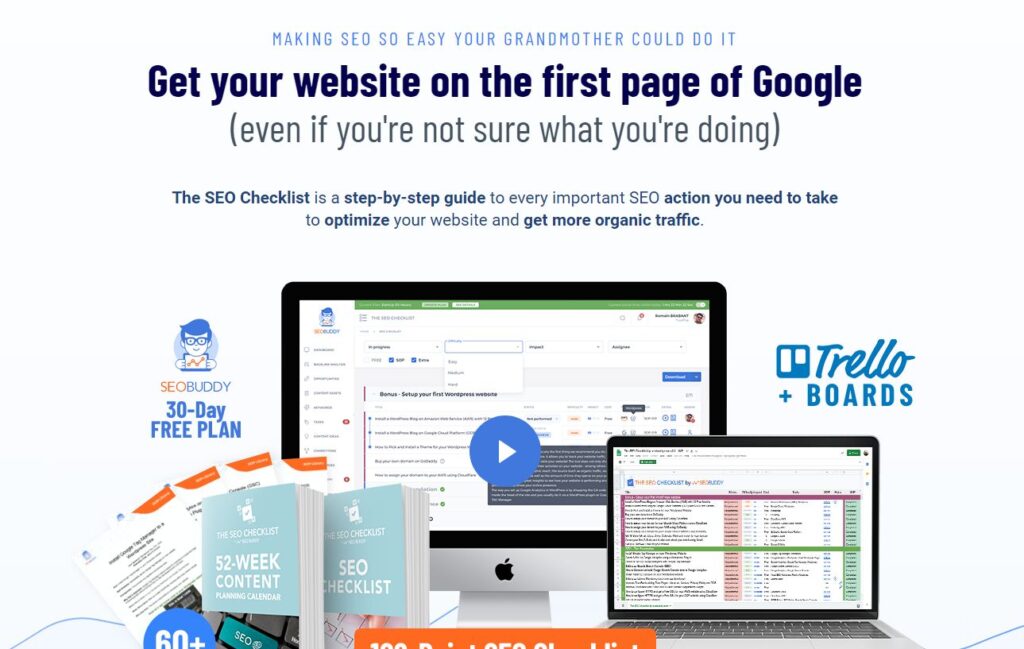
Transitioning from planning to execution in your SEO strategy can feel overwhelming. Where do you begin, and how can you be sure you’re covering all your bases? Having a comprehensive SEO checklist can simplify this process, ensuring that you systematically address each component of your strategy for optimal results. What does this checklist entail, and how can it guide your efforts from the theoretical framework to practical application?
Firstly, keyword research is the foundation of your SEO strategy. Your checklist should start with identifying and categorizing keywords that are relevant to your business and audience. This research will guide your content creation, helping you to focus on topics that will attract and engage your target audience while also improving your search engine visibility.
On-page optimization is the next critical item on your checklist. This includes optimizing title tags, meta descriptions, header tags, and images. Each page on your website should be optimized for search engines while remaining engaging and informative for users. This balance is crucial for improving both your rankings and user experience.
Content creation and optimization are ongoing tasks. Your SEO checklist should emphasize the importance of regularly producing high-quality, relevant content that addresses your audience’s needs and interests. This content should be optimized for both users and search engines, incorporating targeted keywords naturally and providing value that encourages sharing and engagement.
Lastly, your checklist should include monitoring and refining your strategy based on analytics. Regularly review your website’s performance using tools like Google Analytics to understand what’s working and what needs improvement. This data-driven approach allows you to make informed decisions and continuously refine your strategy for better results over time.
Avoiding Common SEO Mistakes: What Not to Do
In the journey of optimizing your website for search engines, it’s just as important to know what to avoid as it is to know what to implement. What are some common SEO mistakes that can undermine your efforts, and how can you steer clear of them to ensure your strategy is effective and your website thrives in search engine rankings?
One of the most common mistakes is neglecting mobile optimization. In today’s digital age, where the majority of searches are conducted on mobile devices, having a website that’s not mobile-friendly can significantly harm your SEO. Ensure your site is responsive and offers a seamless user experience on all devices to avoid being penalized by search engines.
Ignoring the importance of user experience (UX) is another critical error. Search engines are increasingly prioritizing sites that offer a positive user experience, including fast loading times, easy navigation, and high-quality content. Focusing solely on search engines and neglecting the end-user can lead to a decline in rankings and traffic.
Keyword stuffing, or overusing keywords in an attempt to manipulate search engine rankings, is a dated and ineffective strategy. This practice not only detracts from the quality of your content but can also lead to penalties from search engines. Instead, focus on creating valuable content that naturally incorporates keywords in a way that benefits the reader.
Lastly, failing to keep up with SEO best practices and algorithm updates can leave your website behind. SEO is an ever-evolving field, and strategies that worked in the past may not be effective today. Stay informed about the latest trends and changes in search engine algorithms to ensure your SEO strategy remains current and effective.
Keeping Up with SEO Trends: Staying Ahead in 2024
As we move forward into 2024, the SEO landscape continues to evolve at a rapid pace. Staying ahead of the curve requires not only adapting to current trends but also anticipating future changes. How can you keep your SEO strategy relevant and effective in the face of ongoing developments in search engine algorithms, user behavior, and technology?
Voice search is becoming increasingly prevalent, with more users relying on voice-activated assistants for their search queries. Optimizing for voice search involves focusing on natural language and question-based keywords, as voice searches tend to be more conversational than typed queries. Adapting your content to accommodate this trend can enhance your visibility in voice search results.
Artificial intelligence (AI) is playing a more significant role in how search engines understand and rank content. Embracing AI and machine learning tools can provide insights into your SEO performance and user engagement, allowing for more targeted and effective optimization strategies. Staying informed about advancements in AI and integrating relevant tools into your SEO efforts can give you a competitive edge.
The importance of E-A-T (Expertise, Authoritativeness, Trustworthiness) principles continues to grow. Demonstrating your website’s credibility and providing authoritative, trustworthy content is crucial for ranking well, especially in industries where accuracy and reliability are paramount. Building a strong reputation and earning backlinks from reputable sites can enhance your E-A-T and improve your SEO.
The Future of SEO with the Ultimate Editor
As we stand on the brink of a new era in digital marketing, it’s clear that the future of SEO is intricately linked with the capabilities of the ultimate SEO editor. This isn’t just about optimizing content with keywords anymore; it’s about understanding the complex web of user intent, technological advancements, and search engine algorithms. The right SEO editor becomes not just a tool, but a partner in carving out your space in the online world.
The ultimate SEO editor of the future goes beyond traditional keyword integration, embracing the nuances of semantic search, voice search compatibility, and AI-driven content suggestions. It’s about offering a comprehensive suite of features that cater to all aspects of modern SEO, from technical optimization to content quality and beyond. This holistic approach ensures that your SEO strategy is robust, adaptive, and ahead of the curve.
Moreover, the integration of advanced analytics and machine learning capabilities in an SEO editor allows for real-time insights and recommendations. This makes it possible to not only react to the current SEO landscape but also anticipate future trends. The ability to quickly pivot and adapt your strategy based on actionable data is what will set successful websites apart.
The future of SEO is dynamic, and having the ultimate editor at your disposal equips you with the agility and insight needed to navigate this changing landscape. It’s about making informed decisions, enhancing user experience, and delivering content that resonates both with your audience and search engines. The ultimate SEO editor is your key to unlocking this potential, ensuring that your online presence is not just visible, but vibrant and valuable.
Why the Right SEO Editor is Your Key to Online Success
In the digital age, where the battle for online visibility is fierce, the right SEO editor emerges as the linchpin of online success. It’s not just about having a website; it’s about ensuring that your website can be found by the right audience at the right time. The right SEO editor empowers you to achieve this, making it an indispensable tool in your digital marketing arsenal.
Firstly, an SEO editor simplifies the complex world of search engine optimization. It demystifies SEO for marketers and content creators, providing guidance and suggestions that align with the latest best practices. This ensures that your content is not only relevant and engaging but also optimized for search engines, striking the perfect balance between readability and visibility.
Moreover, the right SEO editor helps maintain consistency in your SEO efforts. It allows for regular audits, keyword tracking, and performance analysis, ensuring that your website remains aligned with your SEO objectives. This consistency is key to building and maintaining your search engine rankings over time, driving sustained organic traffic to your site.
Additionally, an SEO editor facilitates a proactive approach to SEO. With features like keyword suggestion, content optimization tips, and competitor analysis, you can stay one step ahead. It enables you to capitalize on emerging trends, identify potential areas for improvement, and refine your strategy for maximum impact.
Ultimately, the right SEO editor is more than just a tool; it’s a strategic partner that enhances your ability to communicate with your audience through the noise of the internet. By leveraging its capabilities, you can amplify your online presence, engage your target audience more effectively, and achieve your digital marketing goals with precision and confidence.
Next Steps: Harnessing the Full Power of Your SEO Editor
Having established the significance of the right SEO editor in your quest for online success, the next steps involve harnessing its full power to elevate your SEO strategy. This journey begins with a deep dive into the features and functionalities of your SEO editor, understanding how each can be utilized to optimize your online presence fully.
Start by familiarizing yourself with the analytics and reporting features of your SEO editor. Data is your most valuable asset in SEO, providing insights into what works and what doesn’t. Use this data to refine your content strategy, focusing on high-performing keywords, improving user engagement, and identifying opportunities for optimization.
Next, leverage the content optimization capabilities of your SEO editor. This means going beyond keyword density to consider factors like content structure, readability, and user engagement signals. Use the editor’s suggestions to make your content more appealing to both search engines and readers, enhancing the overall quality and relevance of your site.
Additionally, take advantage of the technical SEO features offered by your SEO editor. Ensure that your website is mobile-friendly, loading times are quick, and there are no crawl errors that could hinder your search engine visibility. These technical aspects are crucial for maintaining a strong foundation for your SEO efforts.
Finally, engage with the community and support resources available through your SEO editor. Many editors come with a wealth of tutorials, forums, and customer support options. These resources can provide valuable insights and tips for maximizing the effectiveness of your SEO strategy, allowing you to tap into the collective knowledge of SEO experts and peers.






